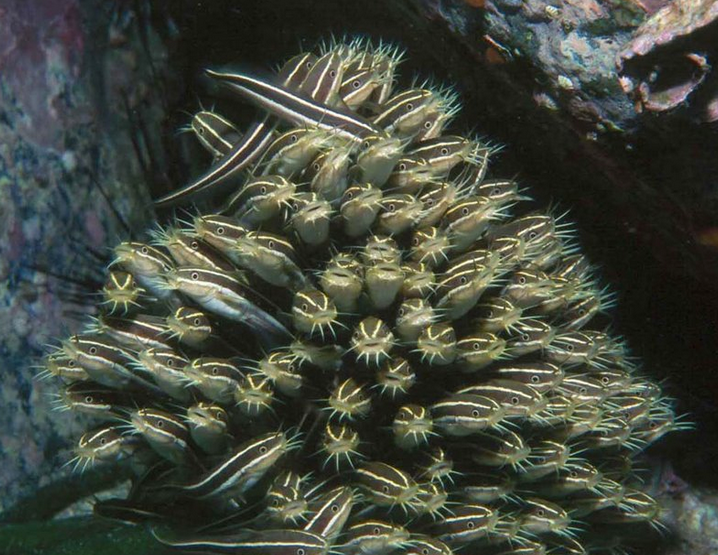Catfish Barbels Detect Breathing Of Buried Worms
This is the first example of a fish being able to measure pH changes in its environment.

Bristle worms can dig, but they can’t hide–at least not from Japanese sea catfish. Although the seafloor mud into which these animals burrow hides them from view and withholds their scent, the worms still need to breathe. As they exhale, they send out small plumes of carbon dioxide, which momentarily make the water just above them slightly more acidic, albeit only in a tiny area within five millimeters of their burrow entrance. The barbels of a catfish, it turns out, can detect this change in pH.
This is the first example of a fish being able to measure pH in its environment, as Ed Yong writes in his blog at National Geographic. Louisiana State University researcher John Caprio and colleagues uncovered this ability with a series of experiments, finding that the Japanese sea catfish (Plotosus japonicus) could find bristleworms buried within a tank in the lab, even in complete darkness. Further, as Yong elaborates:
“It’s quite dramatic,” Caprio told New Scientist. “The fish is like a swimming pH meter.”
So, next time you’re hiding from a catfish in the mud, just hold your breath.
The study was published in the journal Science.